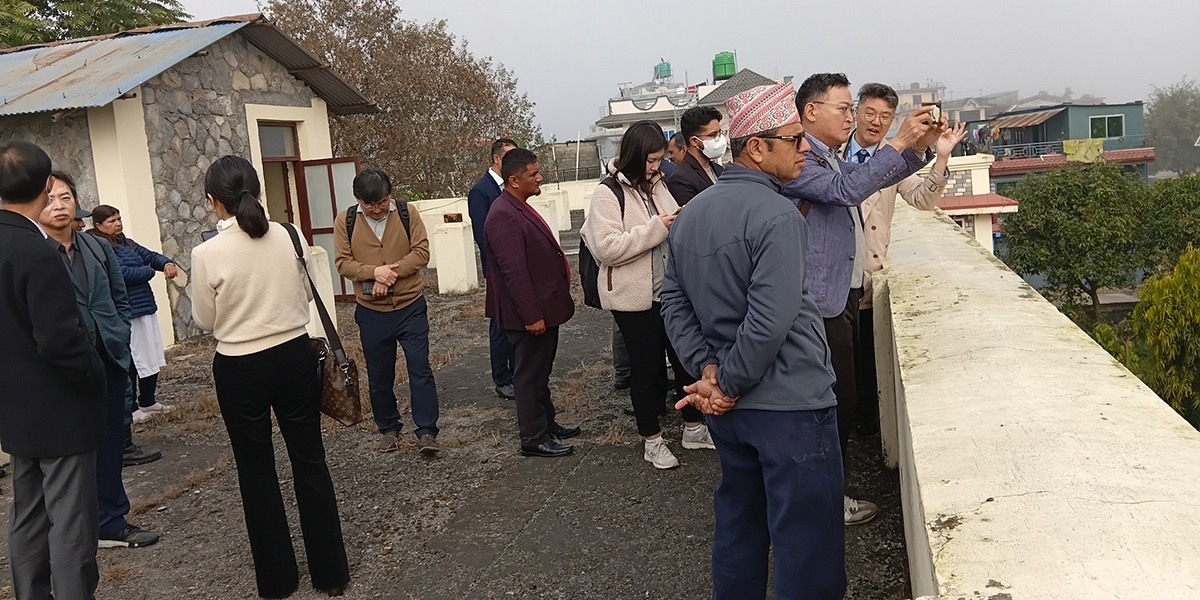
By Kriti Bhuju and Binaya Pandey
Have you ever found it extremely challenging to take your child to school for the first time or whenever they are exposed to a new school environment? For most parents, it is evident that the transition of their child to school is difficult.
But it’s not just about the children – it’s about the parents too. Initially, parents may panic and doubt whether leaving their child in a new environment with a stranger is okay. Moreover, if their child starts crying or whining when left in the new environment, it can be stressful for both the child and the parents.
It’s normal for kids to feel worried and cry during instances such as the first day of preschool, joining a new school, or rejoining school after a long gap. The majority of children quickly bounce back from this stress as soon as their parents leave. However, for some youngsters, this upheaval and the transition from home to school can cause so much stress that it leads to school anxiety. This anxiety may also be referred to as school phobia, school refusal, or emotion-based school avoidance.
The question of whether we are sending our kids to school at the right time is a significant one. Senior Psychologist Binod Paudel suggests that the appropriate age for kids in Nepal has yet to be determined, but the current age at which kids are sent to school seems too early. Although Montessori schools enroll children as young as two years old, or even younger in the case of day care centers, the separation anxiety experienced by a child is a significant concern. Children who have been staying at home with their parents, in-laws, or caregivers are accustomed to that particular environment, and when they are exposed to a new and unfamiliar setting, they can experience fear, according to Paudel.
Is it good to drag kids to school?
Forcing children to go to school when they are not ready or comfortable can be detrimental to both the child and parents. The child may become more fearful, leading to crying and distress, while the parents may feel stressed and anxious throughout the day. Sigmund Freud, in his work “The Interpretation of Dreams,” suggested that dreams can be linked to unconscious memories or experiences that are stored implicitly in memory without actual awareness. Moreover, dreams can also be seen as an expression of one’s emotional self-state. Therefore, if a child starts shouting or crying at night, saying “I won’t go to school,” parents should understand that there may be something wrong. The child may be experiencing separation anxiety, also known as Separation Anxiety Disorder (SAD).
SAD is a condition characterized by extreme anxiety when separated from immediate caregivers or loved ones, or even from one’s home. When a child experiences excessive anxiety about going to school or just thinking about it, it can impact not only the child but the entire family. Parents may feel like everything in their world is falling apart, and they may be solely focused on how to get their child to school. Toddlers can struggle with school anxiety, and parents can become exhausted from dealing with it. Preparing your child for school can be stressful as the day begins because you must balance their emotions with the need to get them to school while also taking care of other obligations, such as those at home or work. Even if you successfully get your child through the school gate, it can be challenging to celebrate because you know that the issue may arise again tomorrow.
Parents can share their own experiences and coping mechanisms to encourage children who have excessive school-related fear.
What causes school anxiety?
Depending on a child’s age, school anxiety can take on a variety of forms and have various causes, manifesting in different ways. For preschoolers, separation anxiety may be a significant factor, which is a fear of being separated from their parents or caretakers, combined with fear of the unknown. This could result in tantrums when getting ready for school, at drop-off, and difficulty relaxing. As children enter elementary school, school anxiety can take the form of social anxiety, which is anxiety related to social interactions and exposures, or specific phobias related to schools and their surroundings, such as fears of heights, animals, food, class size, and location. Children at this age may not have acquired the necessary social and personal skills and could be anxious because they don’t want to go to school.
In middle school, students may appear relatively mature and have developed social abilities, but they may also start to desire authority over others and develop social recognition, which can increase bullying and friendship disputes and contribute to school anxiety. The pressure to perform well in school, the need to fit in with their peers, and the changing dynamics can make students feel unqualified and that school is not for them, leading to refusal and frequent absences. During any of these periods, a child may exhibit behaviors like school avoidance and rejection. As parents and educators, we must see this conduct as a warning sign and take steps to foster positive mental health and holistic development in our children.
Anxiety at school, or any anxiety in general, is a threat-induced physiological flight or fight response. When it comes to school, a child with social anxiety perceives it as a threat (even when it is not). That may be the case because school is different from home in several ways: it is full of unfamiliar faces and routines, distant from loved ones, uncertain, demanding of change, and loaded with expectations.

What can be done?
Many children and toddlers today struggle to transition from home to school. As a parent, don’t be afraid to ask and discuss your child’s feelings and difficulties with them. This can be the starting point for finding a suitable solution that works for both you and your child.
Ishwar Rauniyar, a father of two, faced a similar issue when his son refused to go to school in Grade 1. After trying different methods, he realized that children today are faced with various social interactions and academic expectations. In his son’s case, the problem was the same as discussed above: a new setting with changes in home, school, friends, and the addition of a new sibling. So, what is the solution?
To help their children prepare for school and manage school-related anxiety, parents can create a flexible and practical schedule that includes reviewing assignments and projects, effective communication, and spending quality time with their kids during lunch, dinner, and community walks. Regularly talking about their activities and evaluating how everything went can also be helpful. Parents can share their own experiences and coping mechanisms to encourage children who have excessive school-related fear.
If a child is constantly crying and exhibiting a negative attitude, parents can guide them in talking through potential anxiety-inducing events and deciding how to handle them before they occur. It’s easy for parents to feel like their job is done once their child is in school, but it’s important to understand their viewpoint and listen to them. Additionally, reducing screen time and ensuring at least two hours of physical activity a day, as suggested by the World Health Organization (WHO), can aid in a child’s holistic development.
As parents, it’s common to lose focus due to our busy and stressful lives, and we may tend to blame ourselves, especially first-time parents. However, seeking assistance from school administration or a counselor can provide helpful information and support for the child. Encouraging the child to explore and experience new things outside the home can also motivate them to enjoy school more than staying at home.
How teachers can help?
After parents, teachers are often the first to notice signs of school anxiety in children. They can reach out to the child and their parents early on, discuss the situation, and devise an effective strategy to help the child overcome their anxiety.
Teachers can create a safe and inclusive environment for children who may be struggling with anxiety. This could involve designating a quiet corner in the classroom with a cozy atmosphere and toys for play, a bed for rest, a reading area, or a space where children can discuss their feelings with you. Praising children for each small achievement can boost their confidence, according to Bindu Bista, a counsellor at Matribhumi School.
For older children, teachers can provide a trusted adult to whom they can talk to confidentially. Reassuring children that your are there for them and that they are not alone when they need assistance can build a strong connection and relationship based on kindness and empathy, providing them with a great deal of comfort.
While it is common for young children to cry on the first day of school, parents and teachers can help ease their anxiety by remaining calm, creating a safe space for children to share and express their emotions at home and school, and preparing them for school ahead of time. Whether the school experience is positive or negative is up for debate, but what is certain is that parents and teachers play crucial roles in supporting their children through this transition.
(Bhuju holds a doctorate degree and is a development communicator by profession, while Pandey is a psychologist. Both are mental health activists and can be reached for comments at [email protected] and [email protected])

 Himal Press
Himal Press 












